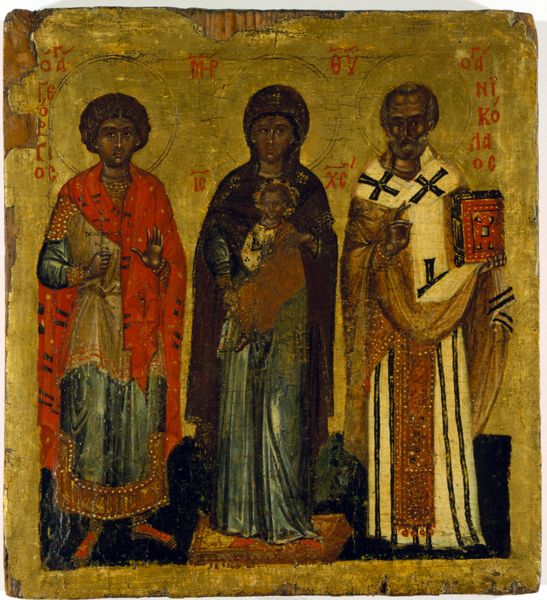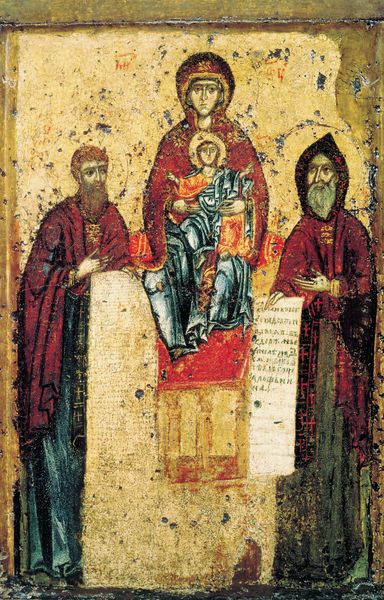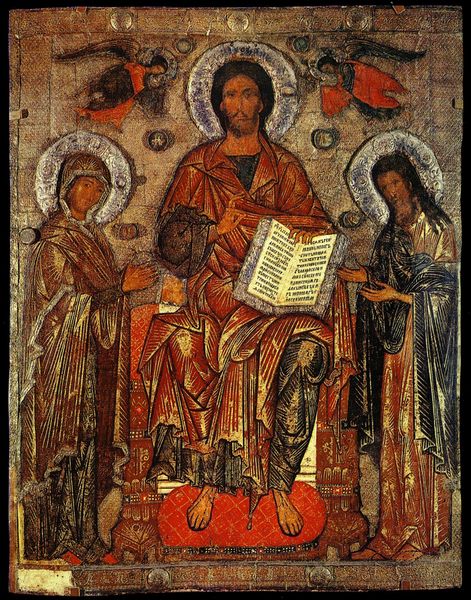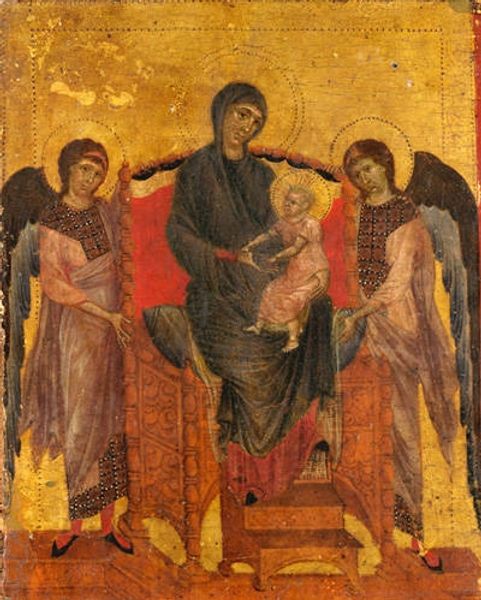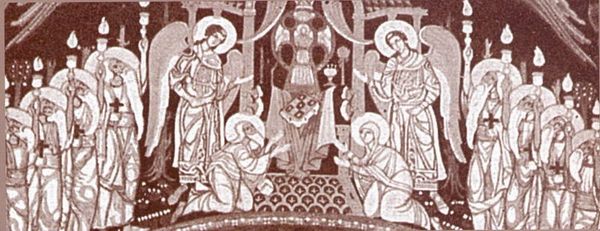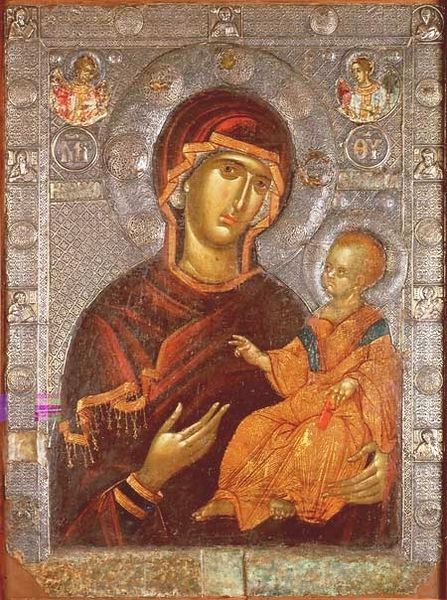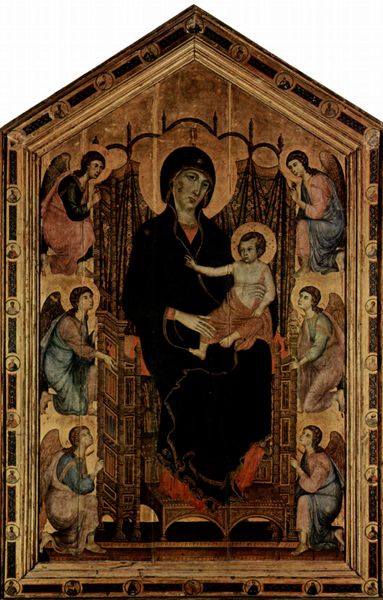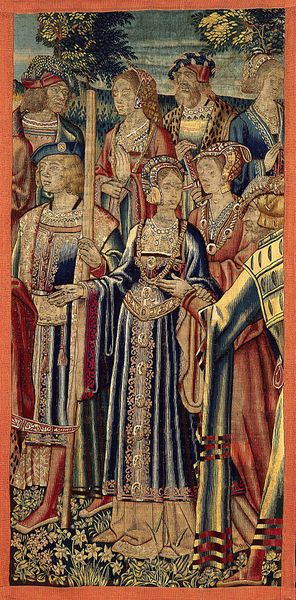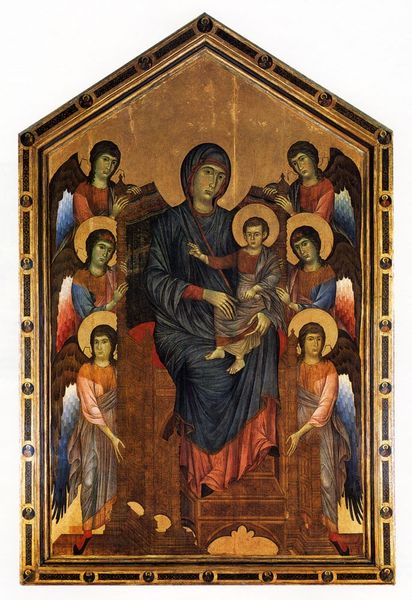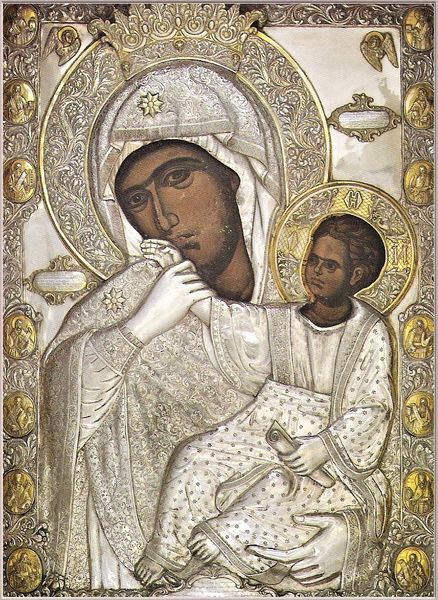
Virgin (Theotokos) and Child between Saints Theodore and George 550
0:00
0:00
orthodoxicons
Saint Catherine's Monastery, Mount Sinai, Egypt
tempera
#
portrait
#
byzantine-art
#
tempera
#
figuration
#
history-painting
Copyright: Orthodox Icons,Fair Use
Curator: This is a mid-sixth-century icon painted with tempera, known as "Virgin (Theotokos) and Child between Saints Theodore and George." Editor: It possesses such a powerful stillness. Despite the wear of centuries, the gazes are arresting. There's something almost unsettling in their directness and the surrounding serenity. Curator: The composition, though somewhat flattened by modern standards, achieves an impressive symmetry. The Virgin and Child are the clear focal point, framed by Saints Theodore and George, and even by the ethereal presence of the angels peering from above. Notice how the halos visually connect the figures. Editor: Absolutely, the halo functions as both signifier and connector, visually and ideologically yoking these figures. But it also locks them into place. Considering this was produced during the reign of Emperor Justinian I, what stories does it tell about power and Byzantine society at the time? Curator: Power is definitely at play here. The figures are intentionally stylized and static, reflecting the eternal and unchanging nature of the divine. The choice of tempera contributes to the luminosity, creating a sense of otherworldliness. Note the carefully balanced colors, the solemn expressions, and how the gold highlights emphasize certain contours. It exemplifies Byzantine aesthetic principles. Editor: True, the Byzantine aesthetic valued such static presentation as a mode of expressing spirituality and authority. I think that within it we can view this image as a cultural document, capturing social stratification and gender expectations, but what narratives did this convey about identity during Late Antiquity? How does this relate to our contemporary understanding of faith and image-making? Curator: That's a valuable lens to use, though one risks imposing contemporary viewpoints on a historical object. The intent was likely to convey a sense of timeless devotion. Yet there is dynamism, particularly if you study the slight tilt of the heads, a turn in gaze that encourages engagement. The icon invites viewers into a state of contemplation. Editor: Precisely. This object's capacity for sustained meaning rests upon its capacity for evolving engagement. Whether theological or historical, its existence remains, remarkably and palpably present. Curator: A lasting testament to faith and artistic expression, indeed.
Comments
No comments
Be the first to comment and join the conversation on the ultimate creative platform.
